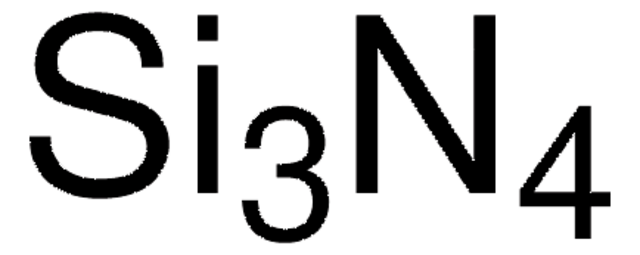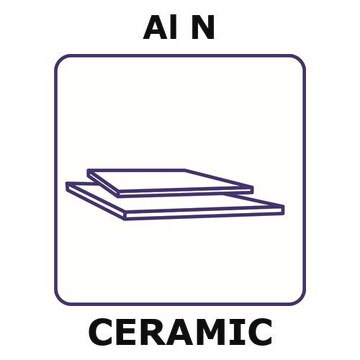Kluczowe dokumenty
241903
Aluminum nitride
powder, 10 μm, ≥98%
Synonim(y):
Aluminium nitride, Azanylidynealumane
About This Item
Polecane produkty
Próba
≥98%
Postać
powder
wielkość cząstki
10 μm
mp
>2200 °C (lit.)
gęstość
3.26 g/mL at 25 °C (lit.)
ciąg SMILES
N#[Al]
InChI
1S/Al.N
Klucz InChI
PIGFYZPCRLYGLF-UHFFFAOYSA-N
Szukasz podobnych produktów? Odwiedź Przewodnik dotyczący porównywania produktów
Powiązane kategorie
Opis ogólny
Zastosowanie
- ceramic material in the preparation of nano capsulated phase change material for building thermal management systems.
- matrix in the preparation of metacomposites along with graphene platelets to improve their thermal conductive properties.
- foaming agent in the preparation of foam glass using glass waste.
Hasło ostrzegawcze
Danger
Zwroty wskazujące rodzaj zagrożenia
Zwroty wskazujące środki ostrożności
Klasyfikacja zagrożeń
Aquatic Acute 1 - Aquatic Chronic 1 - STOT RE 1 Inhalation
Organy docelowe
Lungs
Kod klasy składowania
4.3 - Hazardous materials which set free flammable gases upon contact with water
Klasa zagrożenia wodnego (WGK)
WGK 3
Temperatura zapłonu (°F)
Not applicable
Temperatura zapłonu (°C)
Not applicable
Środki ochrony indywidualnej
dust mask type N95 (US), Eyeshields, Gloves
Wybierz jedną z najnowszych wersji:
Masz już ten produkt?
Dokumenty związane z niedawno zakupionymi produktami zostały zamieszczone w Bibliotece dokumentów.
Klienci oglądali również te produkty
Produkty
Conducting polymers such as polyaniline, polythiophene and polyfluorenes are now much in the spotlight for their applications in organic electronics and optoelectronics.
Polimery przewodzące, takie jak polianilina, politiofen i polifluoreny, są obecnie w centrum uwagi ze względu na ich zastosowania w elektronice organicznej i optoelektronice.
Nasz zespół naukowców ma doświadczenie we wszystkich obszarach badań, w tym w naukach przyrodniczych, materiałoznawstwie, syntezie chemicznej, chromatografii, analityce i wielu innych dziedzinach.
Skontaktuj się z zespołem ds. pomocy technicznej











